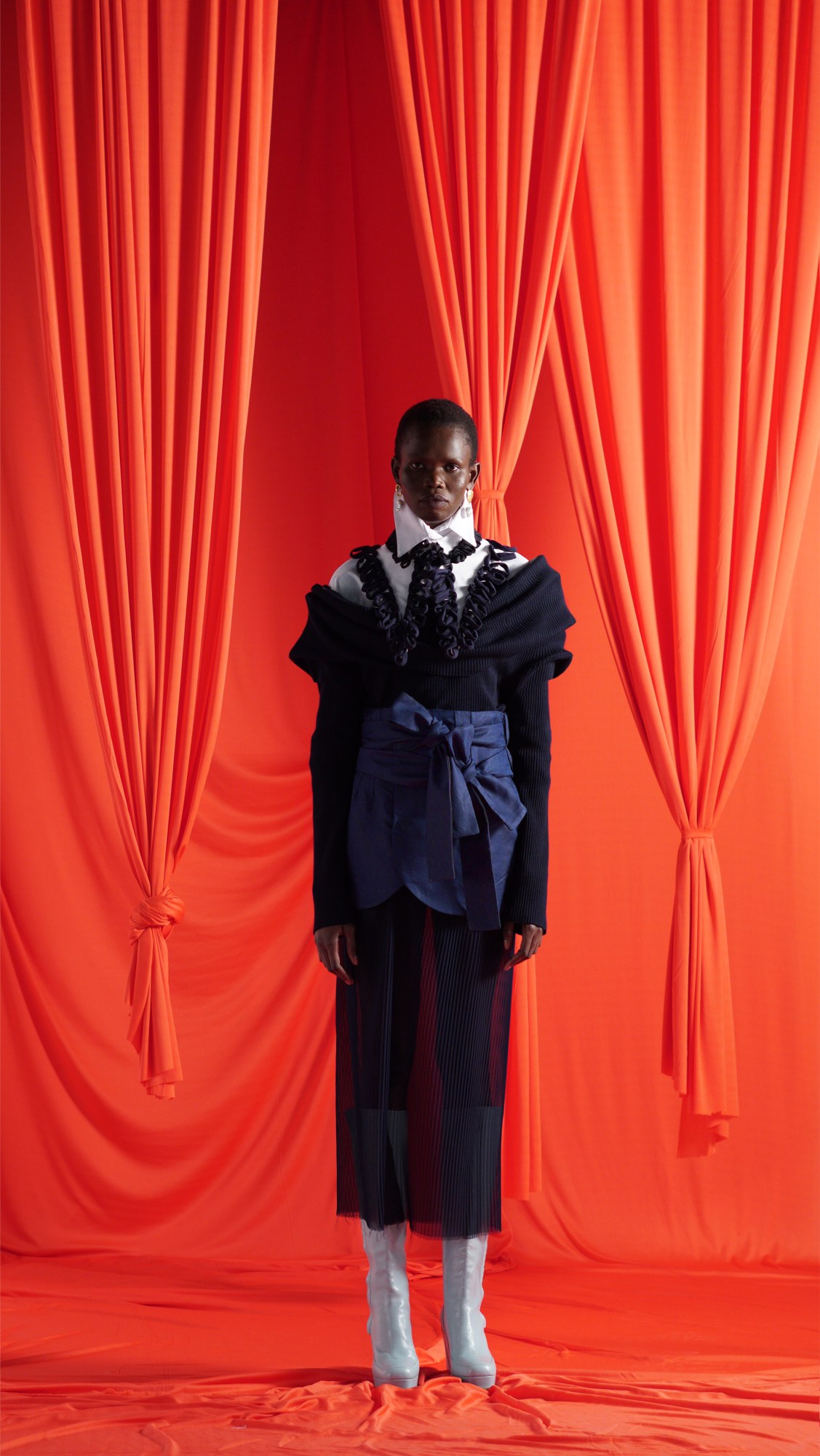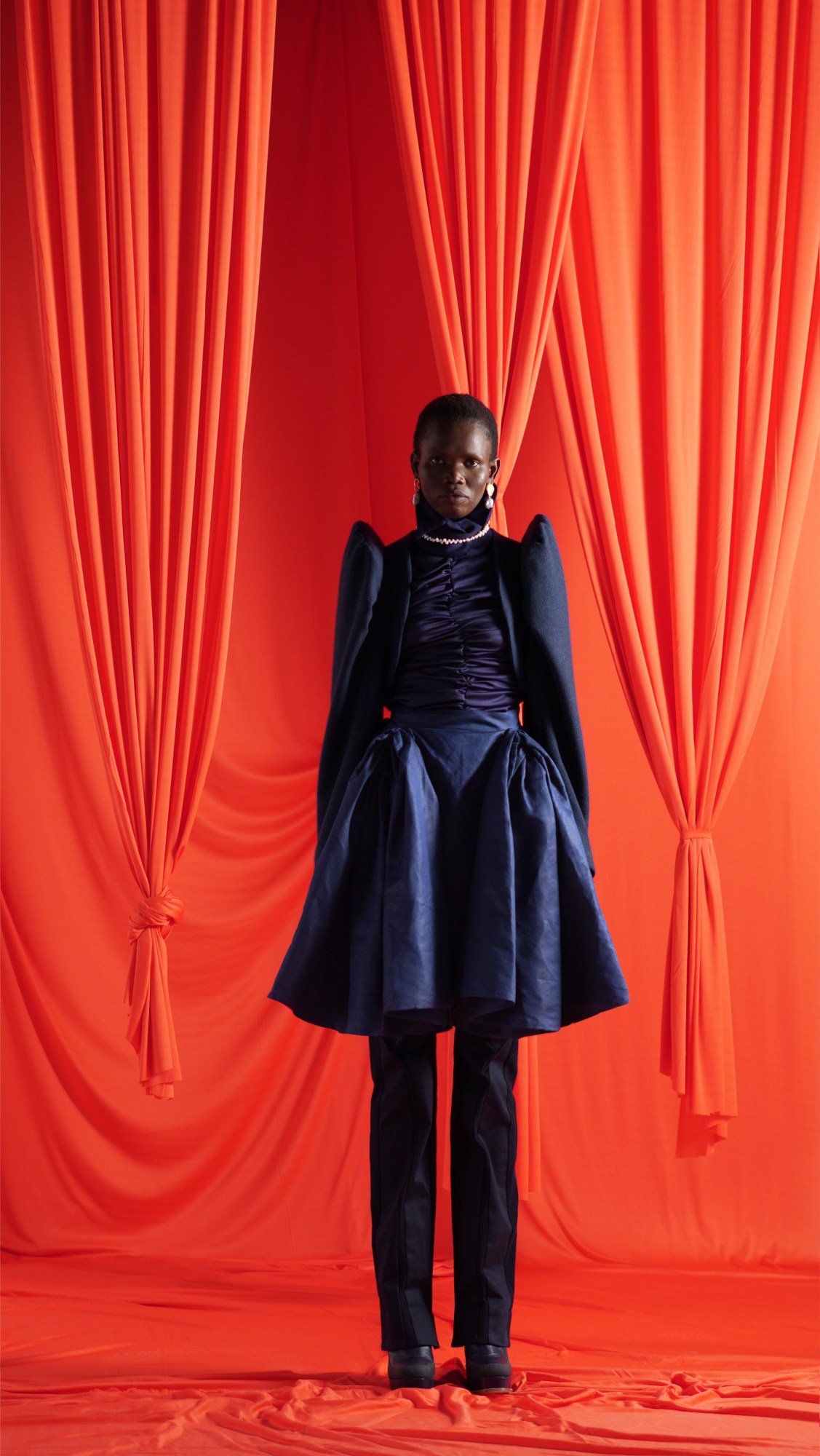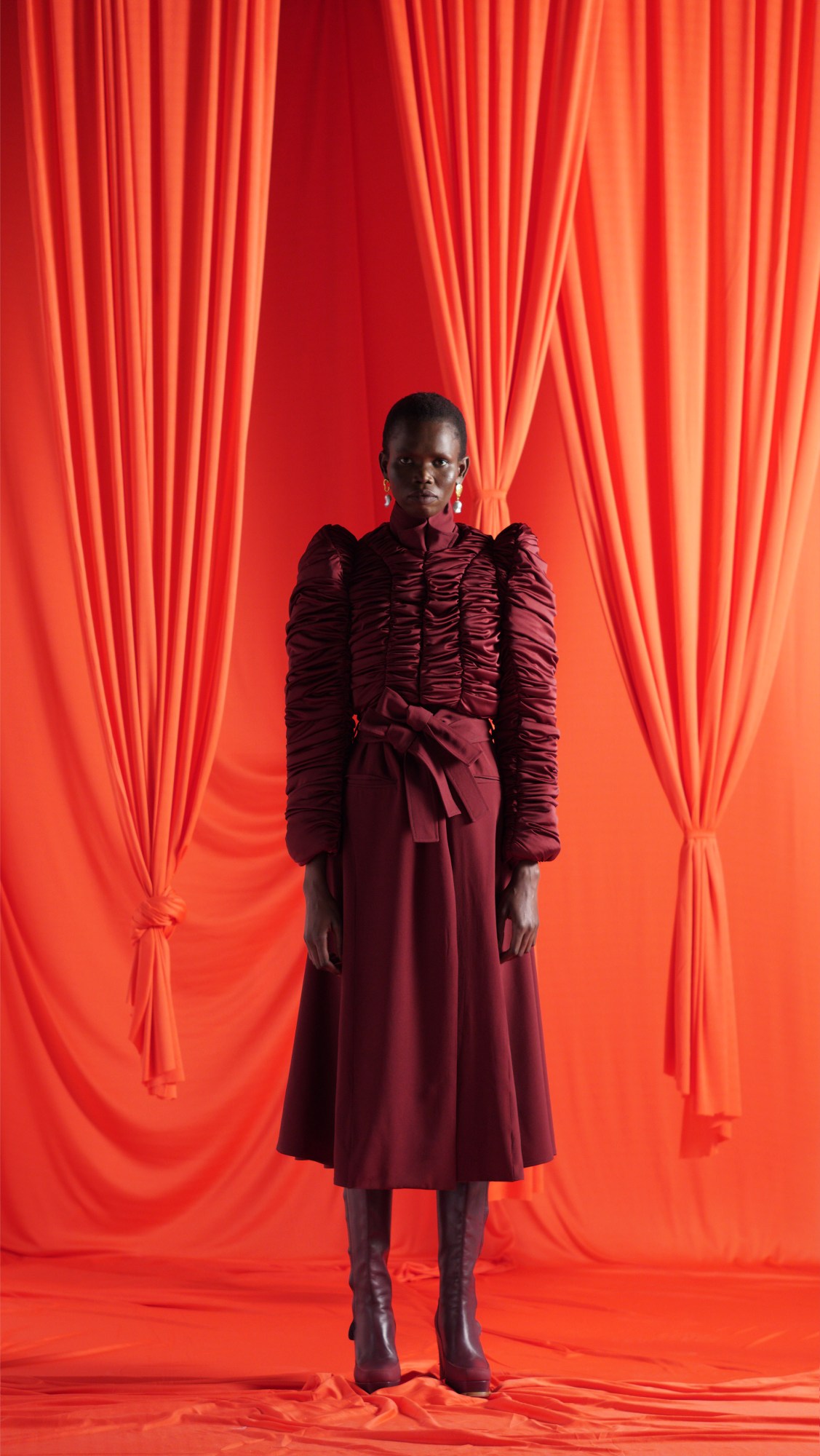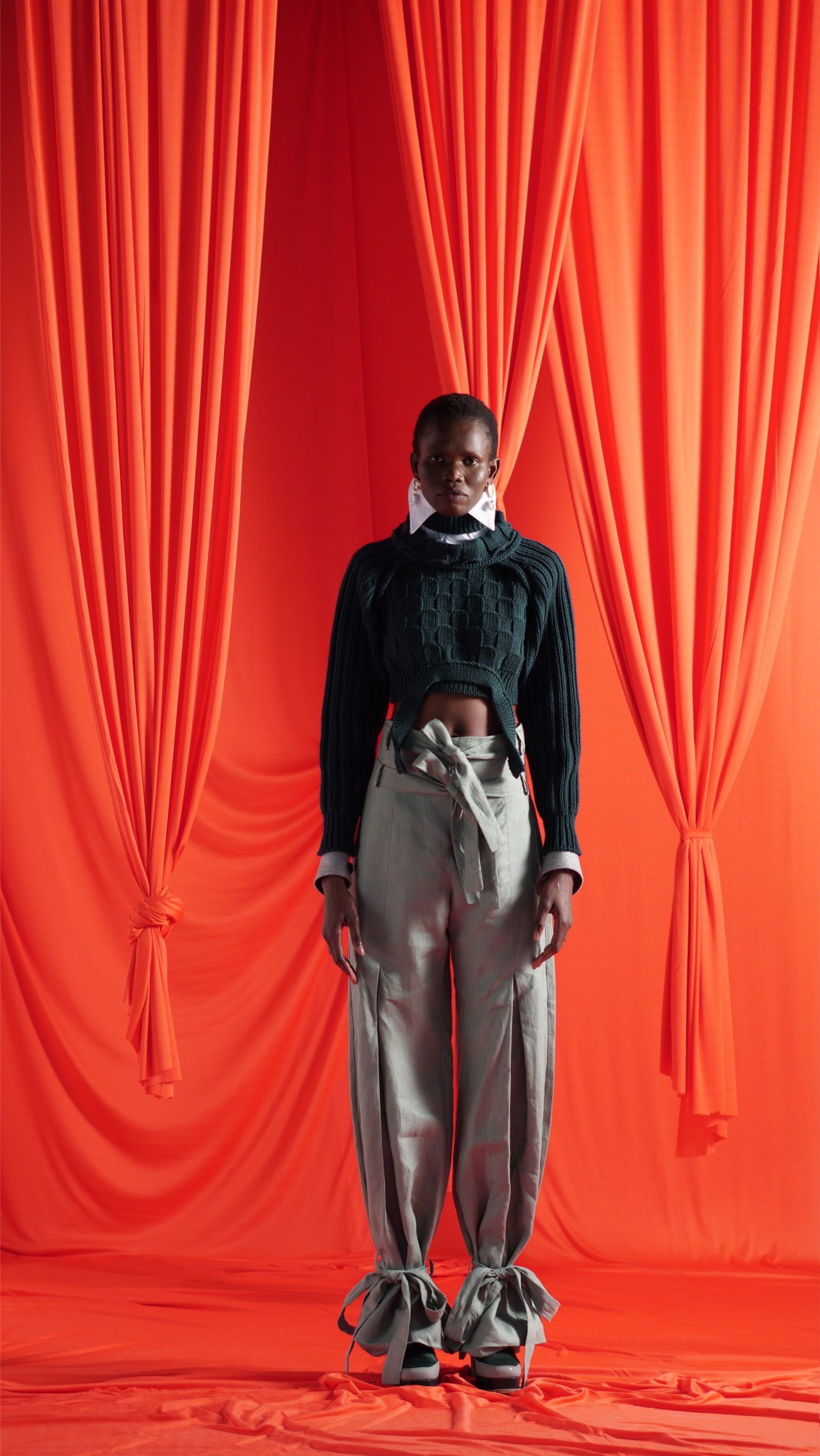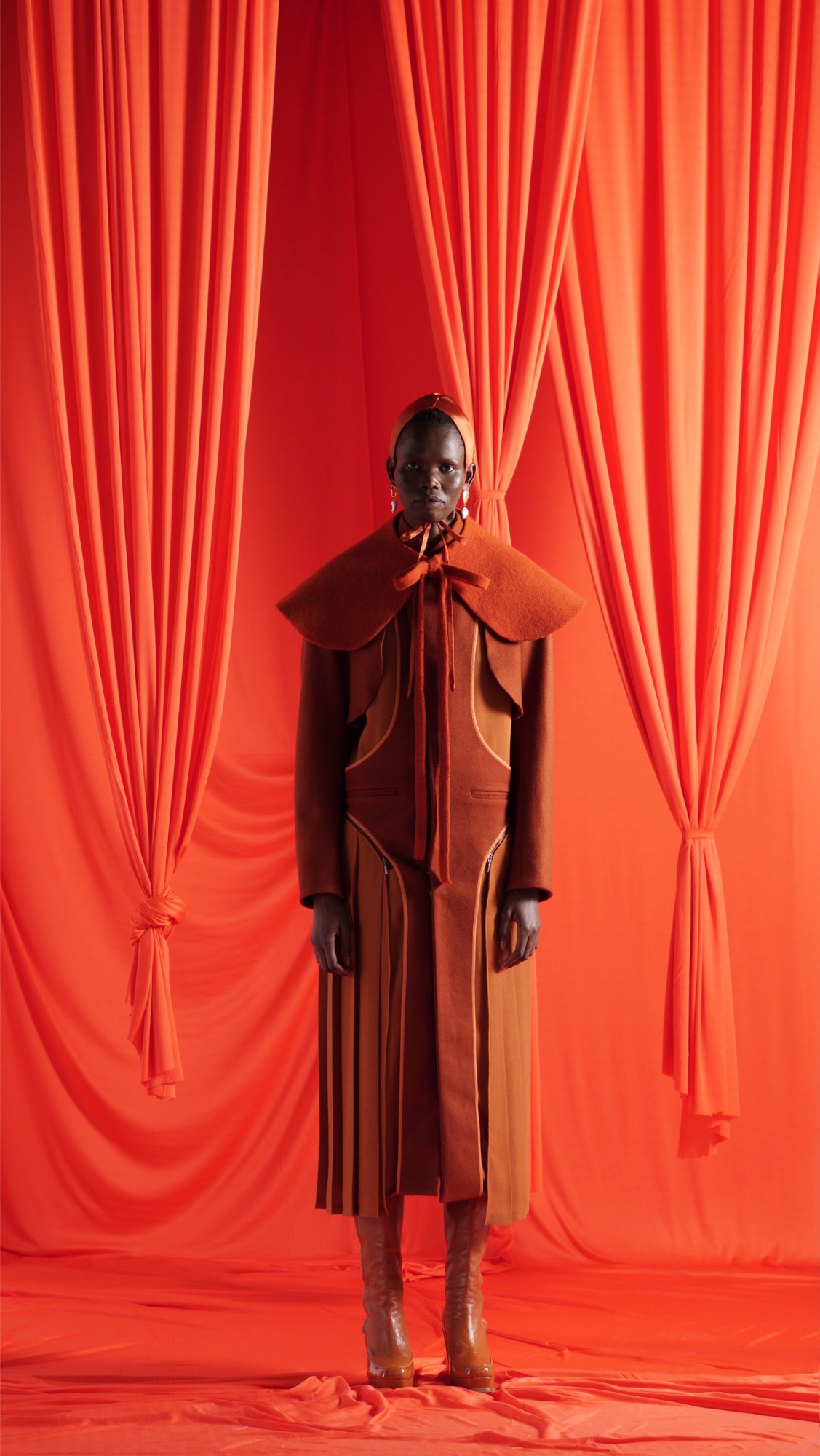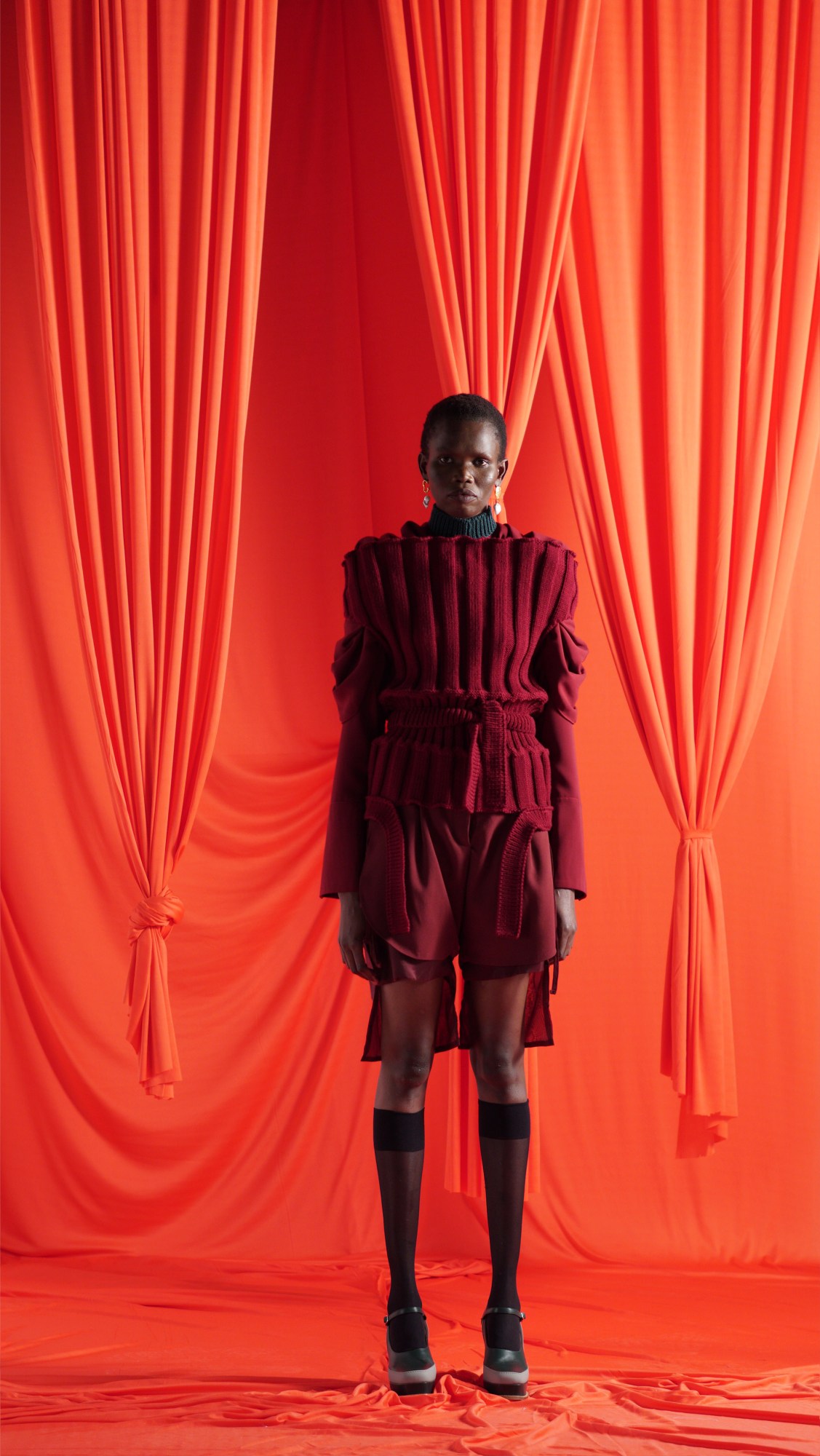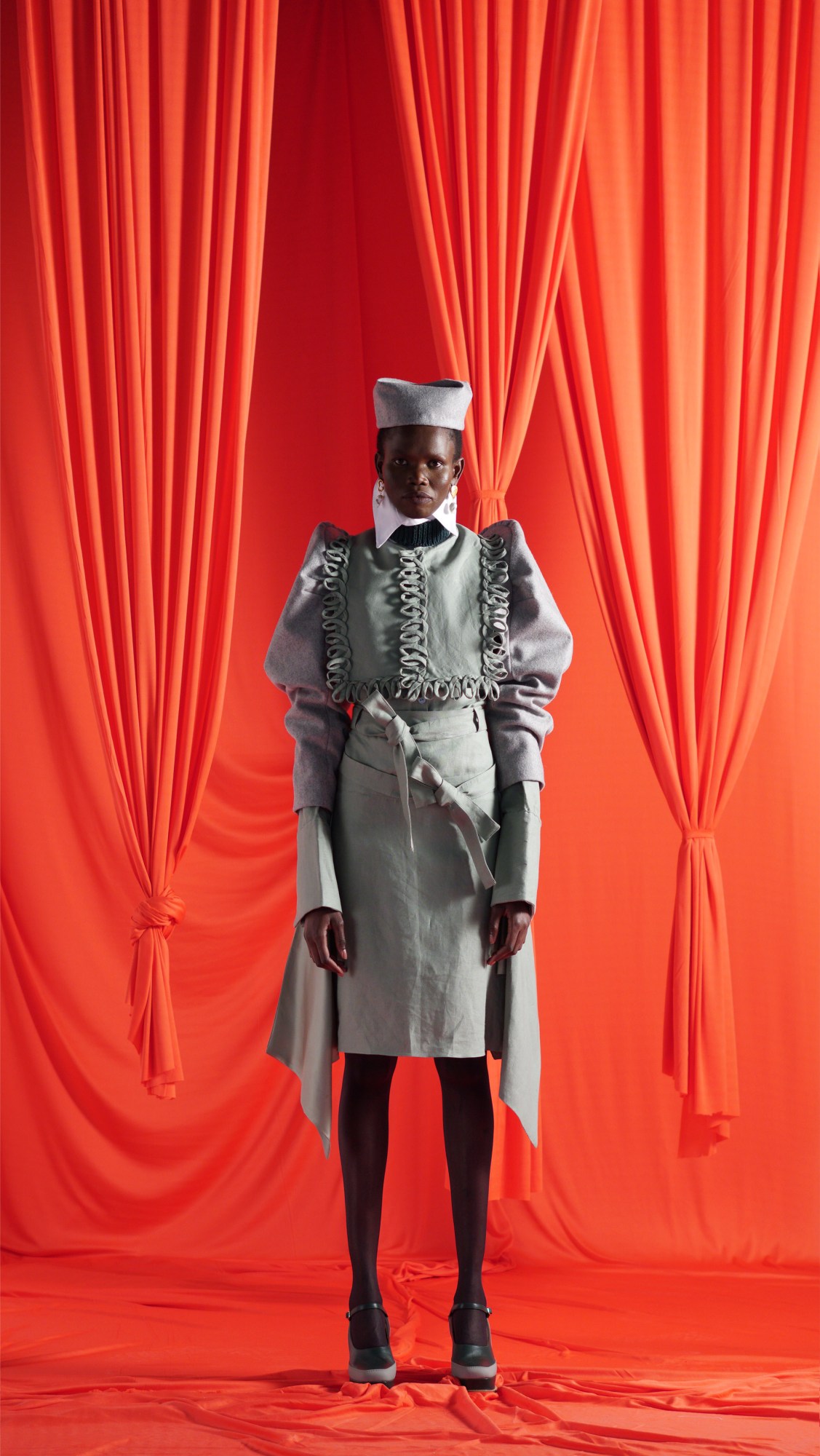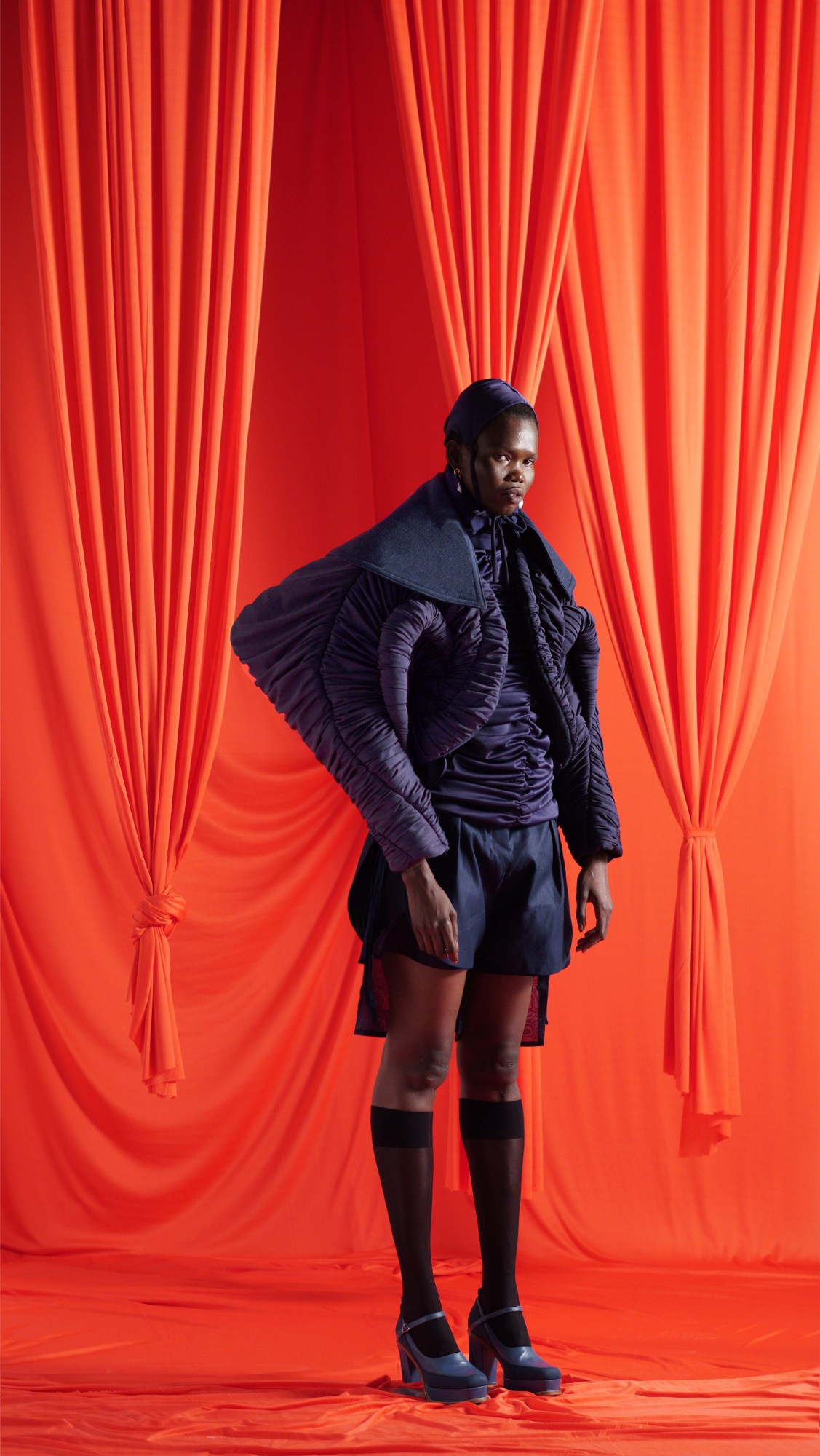Discussing the fashion industry’s urgent need for transparency along its supply chain is, as you’ve probably heard, very ‘in’ right now. Taking the effort to actually, you know, put the points raised in these discussions into practice? Not so much. That’s no reason to abandon all hope, though. If you’re looking for a living example of what the more open, conscious fashion ecosystem we’ve all been discussing could look like, then look no further than Richard Malone.
The winner of last year’s Woolmark Prize, the young London-based designer has made a name for his radically conscious approach to what it means to work as a fashion designer today. While his namesake label is stocked at a handful of stores worldwide, Richard’s practice is, at its core, closer to that of an old-school couturier. Each intricately made garment is limited edition, and the majority are made both to order and to measure, the result of fittings at the designer’s studio.
It isn’t, however, the choice to pursue more of a direct-to-consumer model that makes his approach so noteworthy — rather, it’s the openness with which Richard offers insight into the ‘making of’ stories of each piece. On the press release for the collection he released last week, for example, we learnt the names of A.W Hainsworth (the mill in West Yorkshire that produced the hand-woven boucle Merino wool used in the collection) and of Emblem Weavers (linen-makers based in County Wexford in Ireland). It’s all part of Richard’s mission to expand perceptions of fashion beyond the point at which it is consumed, encouraging a greater sense of appreciation of the diverse skillset and livelihoods invested in its creation.
The greatest asset in the mission is, of course, the fashion itself. A masterclass in deliciously complex construction, Richard Malone’s latest collection is a celebration of craft and handwork. Svelte ruched dresses, reassuringly cosy ribbed Merino knits and sculptural wool tailoring all pay proud homage to the overwritten histories of the female-led spaces in which the garments they subtly reference are both made and worn.
Below, Richard tells us about the women he designs for, his new collection, and his aversion to ‘designing for a screen’.
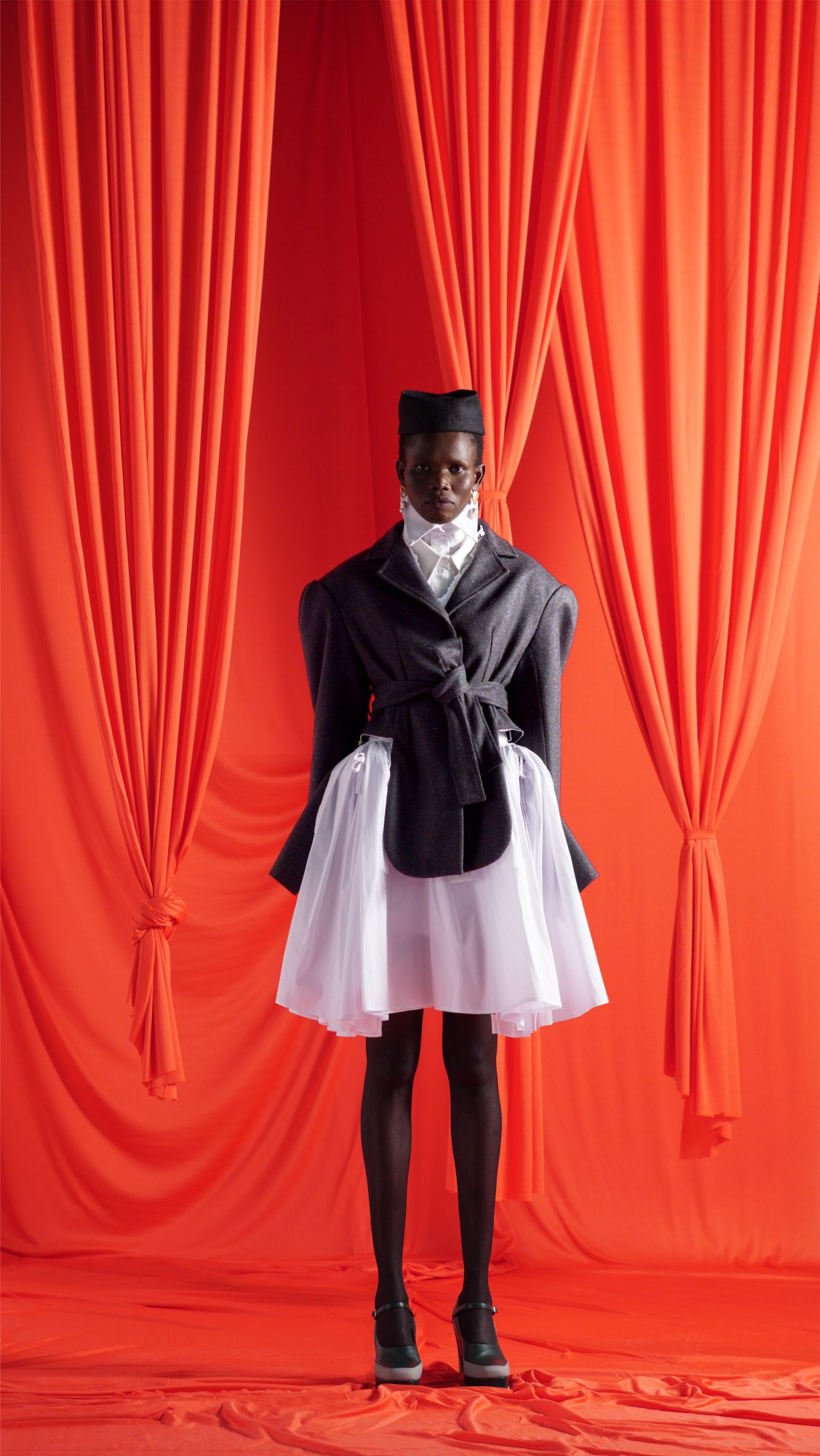
The collection’s subtitle includes a series of quite loaded words — ‘place’, ‘time’, ‘language’, ‘nostalgia’, and ‘future’. What were you looking to evoke here?
It was about looking at what actually makes up the fabric of a brand that isn’t just imagery, and understanding the protective female spaces that I grew up in. I work a lot with the people who make the fabrics we use, and conversations around where they come from, why they’re set up in certain places, and the fact that they always have to fight to exist because of how quickly our industry moves became so important this season. It was about understanding the spaces where people make garments, thinking about the natural dye producers we work with and why they’re set up near water, so that they can have access to certain seaweeds or certain binding agents. I also had lots of really interesting conversations about the Irish language, and how its erasure coincides with the erasure of all of these crafts under British rule.
There’s something quite sacred about this collection. The team I work with has very much stayed the same since the beginning. I’m not trying to grow vertically and work with a bigger stylist or bigger photographers. It’s really important to work with the people who I love and respect, and this season, we were all having quite open conversations about how we could continue supporting the community around the brand and create something that we’re all proud of; understanding those voices, and almost being a service to the women that buy the clothes.
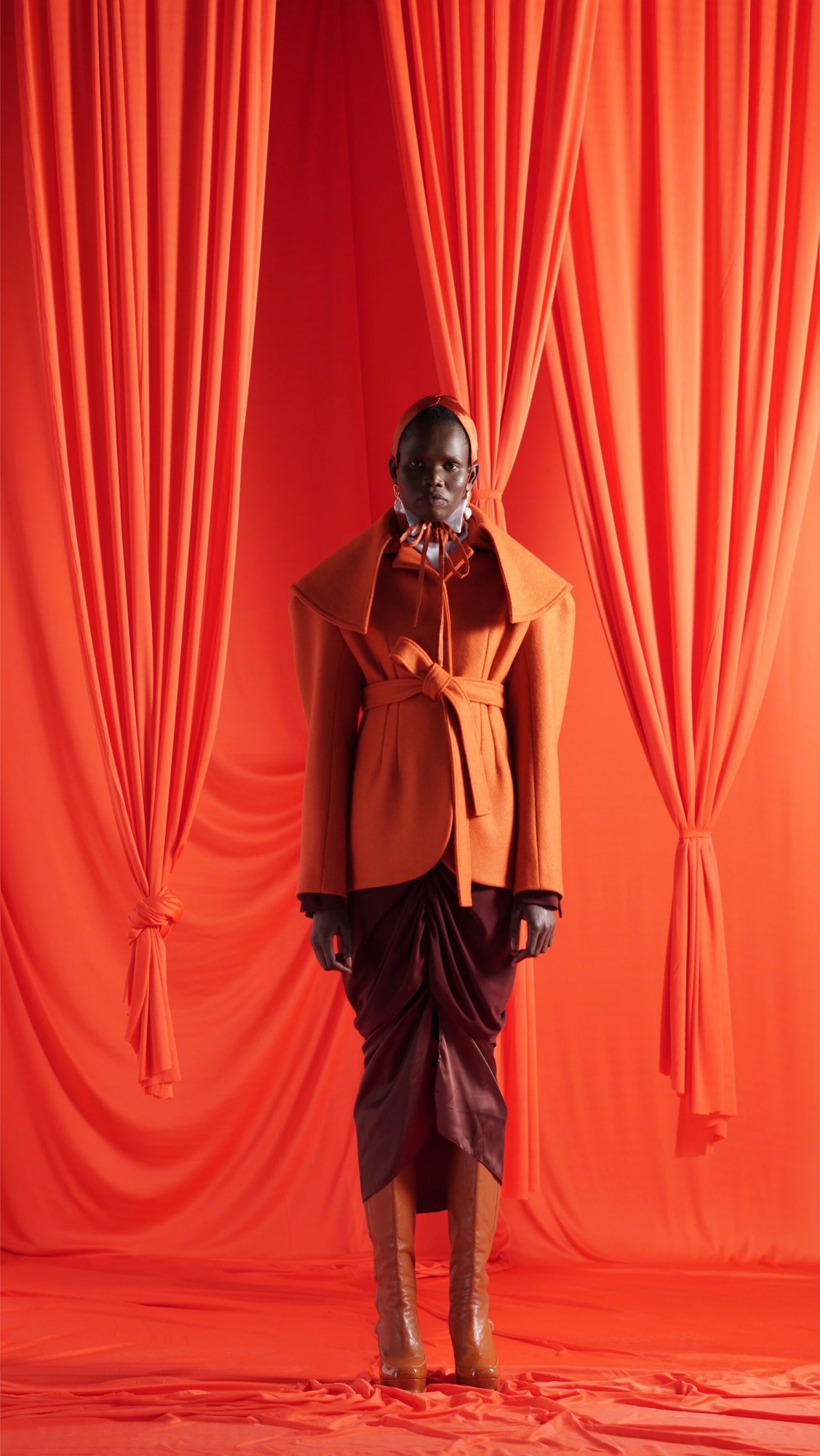
Could you tell us about some of the women you design for and what they’re looking for?
It really varies, and that’s what’s been super interesting for us. I think a lot of the marketing around fashion has been all about these white European men at the helms of these brands telling women what they should or shouldn’t wear, inventing archetypal women that aren’t real. There are so many facets to every person, and I have clients who, one season, will buy the big sculpted showpieces, and then the next, they want a slinky dress. You can’t predict what anyone’s going to want to be. And then there’s such a difference between the thing that someone goes to a shop for, and the thing that someone comes to us for. When we do drops with Browns in London or Joyce in Hong Kong, for example, I always try to work backwards, working directly with the store. There, people tend to buy the tailoring, because the sizing is quite generous, it’s very structured, and you can see what’s been considered in terms of construction.
Regarding the clients who come directly to us, a lot of the women are architects, or they work in the art world or write, and I think they have a certain sensitivity to form, colour and cut. A lot of them have pieces by Comme des Garçons from the late 80s, or Alaïa or Yohji Yamamoto, so it’s often a shared dialogue between us and them about what they would wear to go along with that. As we’ve grown, we’ve seen that people actually really like to invest in the things that they see as timeless, precisely because they’re so far from the zeitgeist, and they’re so far from being the sort of cool that much cheaper brands deliver cool all the time. I really can’t tell you how important that in-person connection is for us. And that’s what’s been hardest about this last year, but it remains the foundation that what we do is built on.
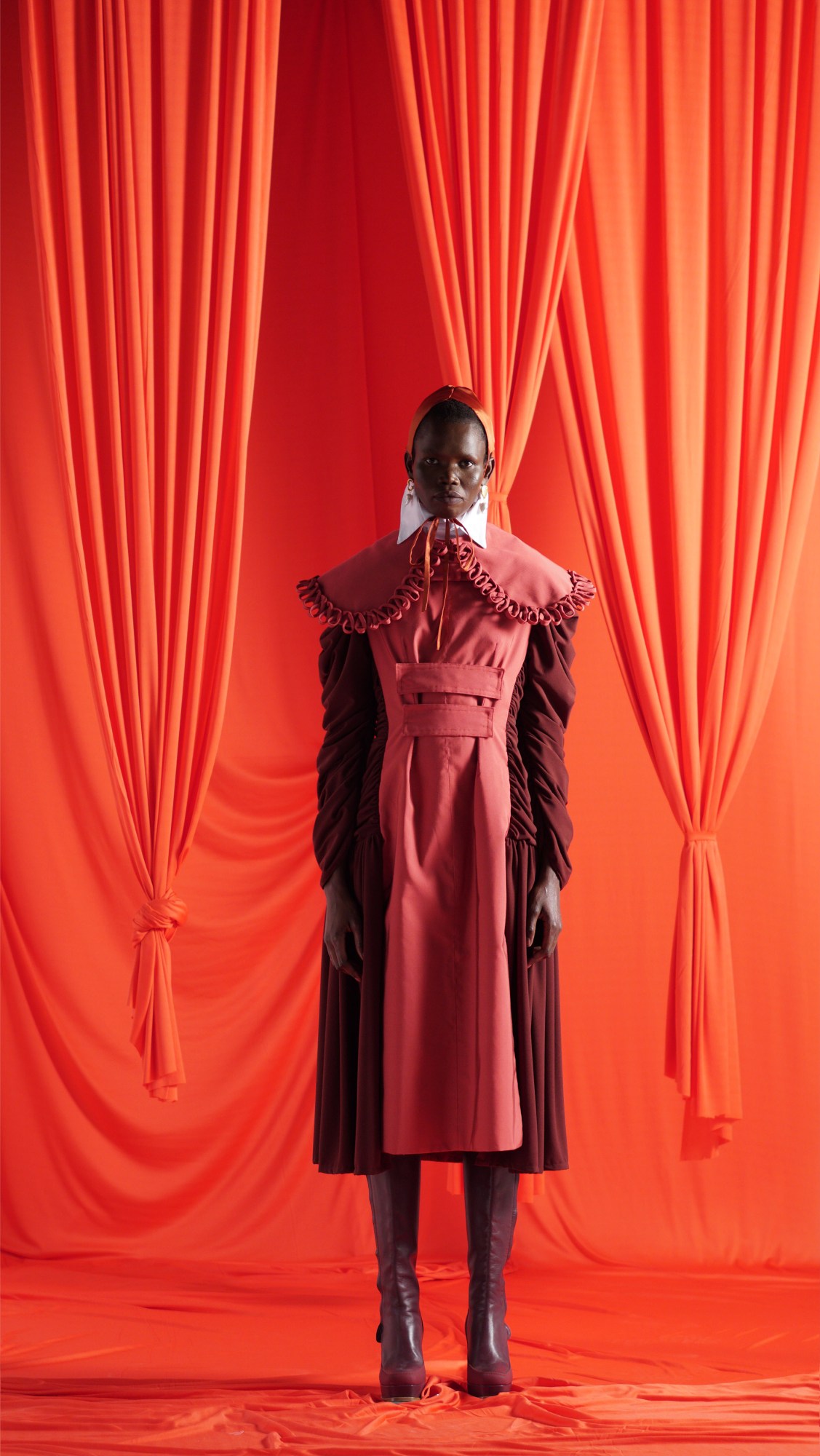
You’ve long been an advocate of reforming the way the fashion system works, and it feels like if ever there was a ‘right time’ for those reforms to be implemented, it’s now. What thoughts have you had when listening to conversations about ‘change’ over the past year?
It’s been interesting. Everyone’s had a lot more time to reflect on how things work, but there’s still a long way to go in terms of transparency. I’m lucky that I’ve been working the way I do for about five years now — we work with the same suppliers, the same factories the same seamstresses; the community of people that make everything that goes into the clothes is still very much connected. But there are a lot of very angry voices talking about how we need to cancel the big brands, for example, without taking into account that, in certain parts of the world, they uphold thousands and thousands of jobs — people’s incomes and livelihoods. Still, I think it’s great that people have started to really think about how large-scale fashion works.
For the first time, people are really waking up to the fact that all of this labour is being exported overseas, and people are really being exploited, and there’s a greater understanding of the facts and figures behind it. It can sometimes be quite frightening for people to take on so much information, there’s a greater effort being made to understand the steps that make up the whole. That’s why I’ve tried to always try to be as transparent as I can in sharing my suppliers, where things are from, and where they’re made. And even with the labels in the garments, everything’s editioned, and you can often trace a fabric, or even a dye, back to where it comes from.

Over the past year, we’ve often heard designers talk about the idea of ‘designing for a screen’ in the absence of physical shows. What are your thoughts on this?
For me, it’s always been so direct-to-consumer. It’s always been about people coming to the studio, doing fittings and operating in quite an old fashioned way — which I love, as I’m not detached from making clothes. I think that Instagram can be a huge problem — it compels designers to try to sell things so quickly, and people fail to really look at garments, even though they’re still buying them. Even with our campaigns, they’re all done privately, printed as books and sent to our clients. Part of our plan for the next year, is for us to open this up and allow more people to access these, but women’s fashion is so bombarded with images and product, and I think it’s nice to respect the craft of making, to let clients come to the studio and see the tailor, the seamstress and how they’re garments are made. With this idea of designing for a screen, it also comes back to the topic of erasure. It erases a lot of the actual industries that make up fashion — fabric-making, weaving, dyeing, embroidery, linen-making… spaces that are all female-led. And no one knows about them. Their culture has been erased and exported elsewhere.
What do you hope people are able to take away from the collection, whether seen on a screen or in-person?
Images are quite difficult for me, because as a maker, when you see something front-on and flat, it feels a bit… meh. It’s fine, but that image isn’t what I’m trying to sell. Still, I hope people look at the details. It’s very rich in terms of layering, for example, and I want people to understand the cutting skills that go into it, the labour that goes into it; to look at the supply people and understand the chain that a garment goes through to exist. Even if people come to the studio and try things on and don’t want to buy anything, that’s not necessarily what it’s about. It’s about learning about construction, seeing where everything comes from, and understanding that things actually can be done in a different way.
